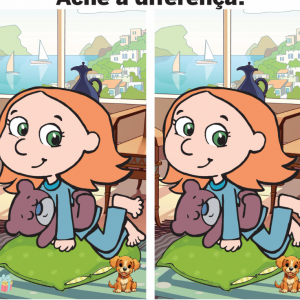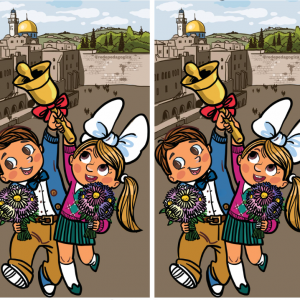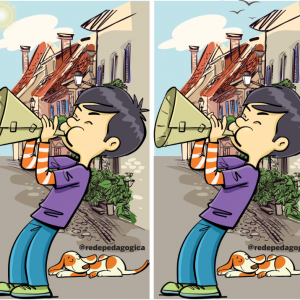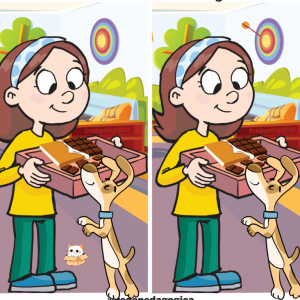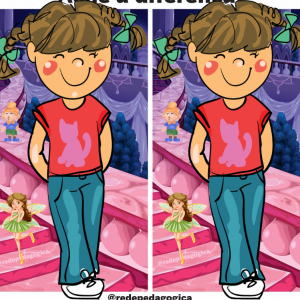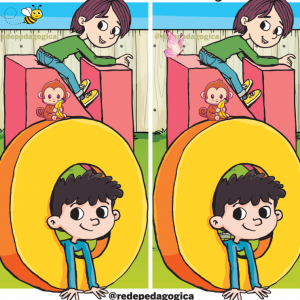The Power of Observation: How “Spot the Difference” Games Enhance Cognitive Development
When you think of children’s activities, what comes to mind? Probably games, sports, or maybe even puzzles. But there’s one often-overlooked game that provides immense benefits to young minds: “Spot the Difference” puzzles. Though seemingly simple, these games engage children in ways that enhance their cognitive abilities, including attention to detail, problem-solving skills, memory, and much more. Let’s take a deep dive into how this fun and interactive activity helps children grow in multiple ways.
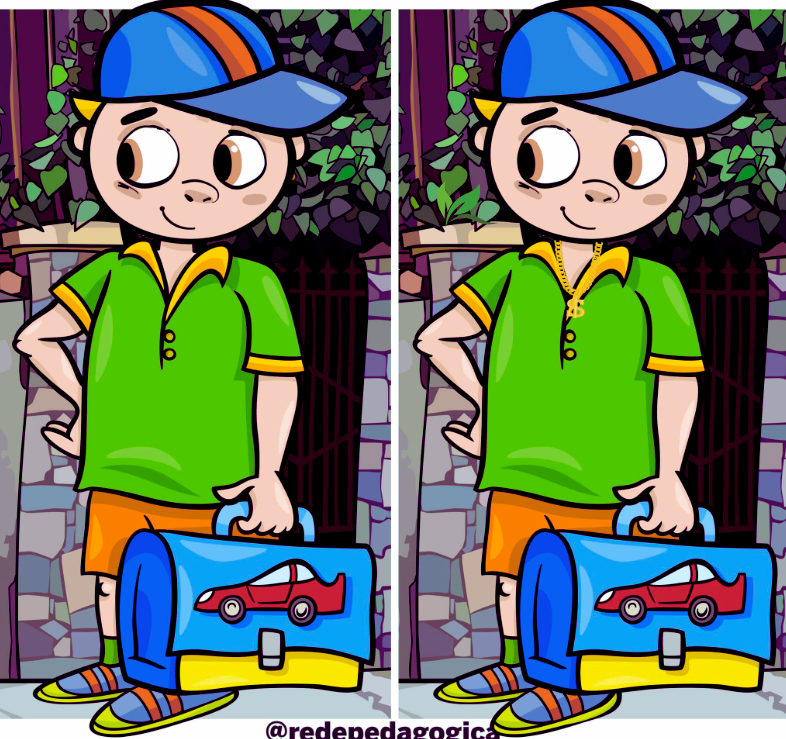
The Cognitive Benefits of “Spot the Difference” Puzzles
Improving Attention to Detail
“Spot the Difference” puzzles require children to pay close attention to visual details. They must closely inspect each image, analyzing every object, shape, color, and alignment to spot even the smallest changes. This process of scanning images helps sharpen their ability to focus on important details, which is essential not only in puzzle solving but in everyday life as well.
Consider the image of the boy with his backpack. In this type of puzzle, a child might need to differentiate between subtle details like the size of an object or the positioning of an accessory. This attention to detail is crucial when children start school, as it prepares them to notice even small differences in their assignments, such as identifying key concepts in their studies or recognizing patterns in math.
Enhancing Visual Perception and Processing
The act of distinguishing between similar images improves visual processing skills. Children learn to perceive differences that aren’t immediately obvious, which trains their brain to better interpret and process visual stimuli. This skill translates well to other areas of life, including art, reading, and even interpreting signs or symbols in their environment.
In the context of the “Spot the Difference” activity, a child might spot that the shape of the letter “S” on the boy’s backpack is slightly altered or that a missing detail, such as a missing button, exists. These small exercises in visual perception can help develop their ability to make sense of complicated visual inputs in a structured way.

Boosting Problem-Solving Abilities
Critical Thinking and Logical Reasoning
At its core, “Spot the Difference” is all about problem-solving. Children must use logical reasoning to determine which objects in the images are the same and which are different. They start by noting large differences, but to complete the puzzle, they must dig deeper to identify the tiny variations hidden in plain sight.
By practicing this process, children build a foundational understanding of critical thinking. Just like solving a math problem or overcoming a challenge in school, these puzzles encourage kids to think strategically. They ask, “What do I know, and how can I apply that knowledge to find the solution?” This inquiry-based approach boosts their problem-solving skills over time.
Learning to Persevere
One of the less obvious benefits of “Spot the Difference” games is that they teach children to persevere through challenges. Not all differences are immediately visible, which can be frustrating, especially for younger children. However, with each attempt, they refine their attention and problem-solving strategies, eventually finding success.
This perseverance is crucial in school and other aspects of life. The ability to push through difficulties, reassess, and try again builds resilience—an essential trait for success, especially in academic and personal endeavors.

Memory and Recall: Training the Brain
Improving Visual Memory
“Spot the Difference” puzzles also work wonders on a child’s memory. To succeed, they need to hold the original image in their minds while comparing it to the altered version. This trains their working memory, which involves retaining and manipulating visual information in real-time.
As children practice this type of game, they gradually become better at remembering details over time. For instance, while observing the boy’s backpack or the background in the puzzle, they must recall subtle visual details such as the number of stars on the bag or the pattern in the background. This skill will help them with tasks like remembering classroom instructions or retaining important concepts from their lessons.
Strengthening Long-Term Memory
In addition to short-term working memory, these puzzles can help strengthen long-term memory as well. When children frequently engage in these puzzles, they begin to remember common patterns and types of differences (such as color changes or size variations). This generalization helps them retain information more effectively, improving their memory recall for other subjects and activities.
Emotional and Social Development
Fostering Emotional Control
While solving a “Spot the Difference” puzzle can be a lot of fun, it can also become frustrating when the differences aren’t easy to spot. For children, learning to manage this frustration is part of the emotional growth that occurs during puzzle-solving activities. The process teaches them patience, as they must remain calm and focused even when the solution isn’t immediately apparent.
In the image of the boy carrying a car-themed backpack, the game allows children to learn how to deal with setbacks, and in the end, they get to enjoy a sense of accomplishment. This emotional development is essential for personal growth and success, both in the classroom and beyond.
Building Confidence
When children successfully complete a “Spot the Difference” puzzle, it gives them a sense of pride and boosts their confidence. The satisfaction of solving a challenging puzzle strengthens their belief in their own abilities. This sense of achievement can be carried over into other areas of life, where children feel motivated to tackle more complex problems and take on new challenges.

Social Skills: Cooperation and Interaction
Working Together in a Group
While “Spot the Difference” puzzles are often solo activities, they can also be great for fostering teamwork when children work together to solve the puzzle. Whether it’s with siblings, friends, or classmates, working on these puzzles collaboratively helps children develop social skills. They learn to communicate their observations, negotiate who will tackle different parts of the puzzle, and share the sense of accomplishment when they finish.
For example, in a classroom setting, children might work in pairs or small groups to complete a “Spot the Difference” activity. This cooperative environment promotes social interaction and collaboration, which is important for their interpersonal development.
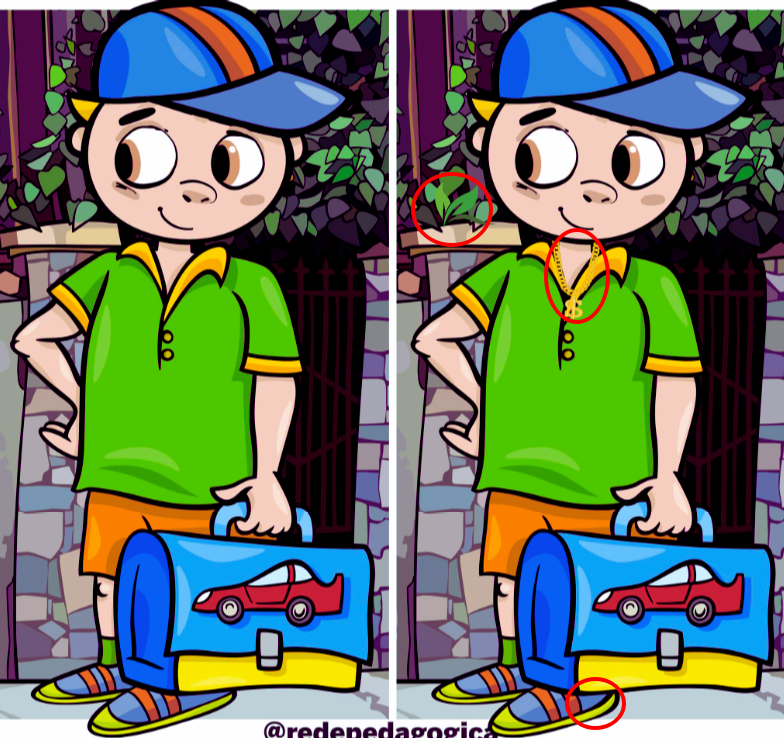
Conclusion: The Lasting Impact of “Spot the Difference” Games
In conclusion, “Spot the Difference” puzzles are much more than just a fun pastime—they are a valuable tool for developing a wide range of cognitive, emotional, and social skills. From improving attention to detail and memory recall to teaching perseverance and emotional control, these puzzles provide children with the foundation for a lifetime of learning and growth.
By encouraging critical thinking, fostering emotional resilience, and providing opportunities for social interaction, “Spot the Difference” games help children not only solve puzzles but also build the skills necessary for success in all aspects of life. So, the next time your child plays one of these puzzles, know that they’re engaging in an activity that promotes lifelong development.
